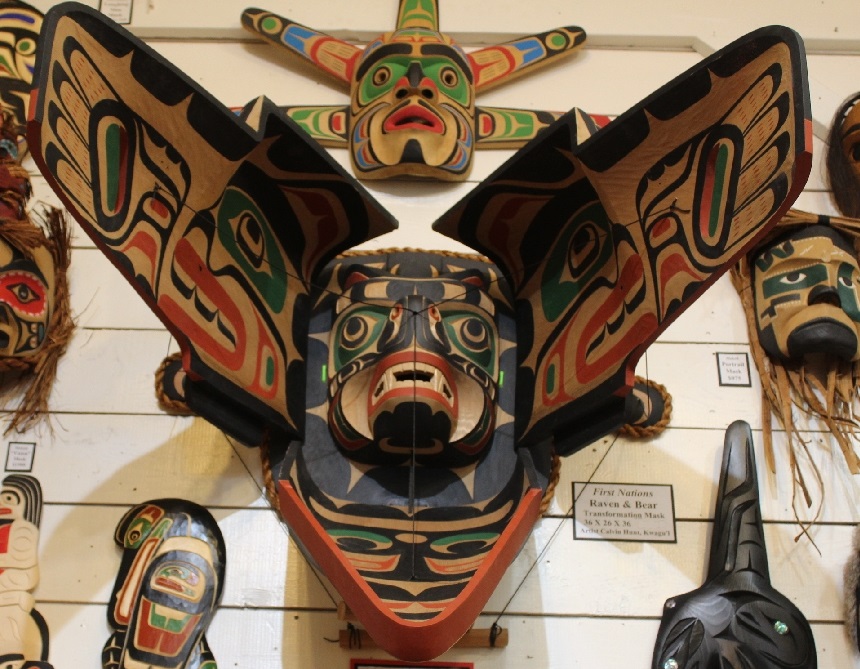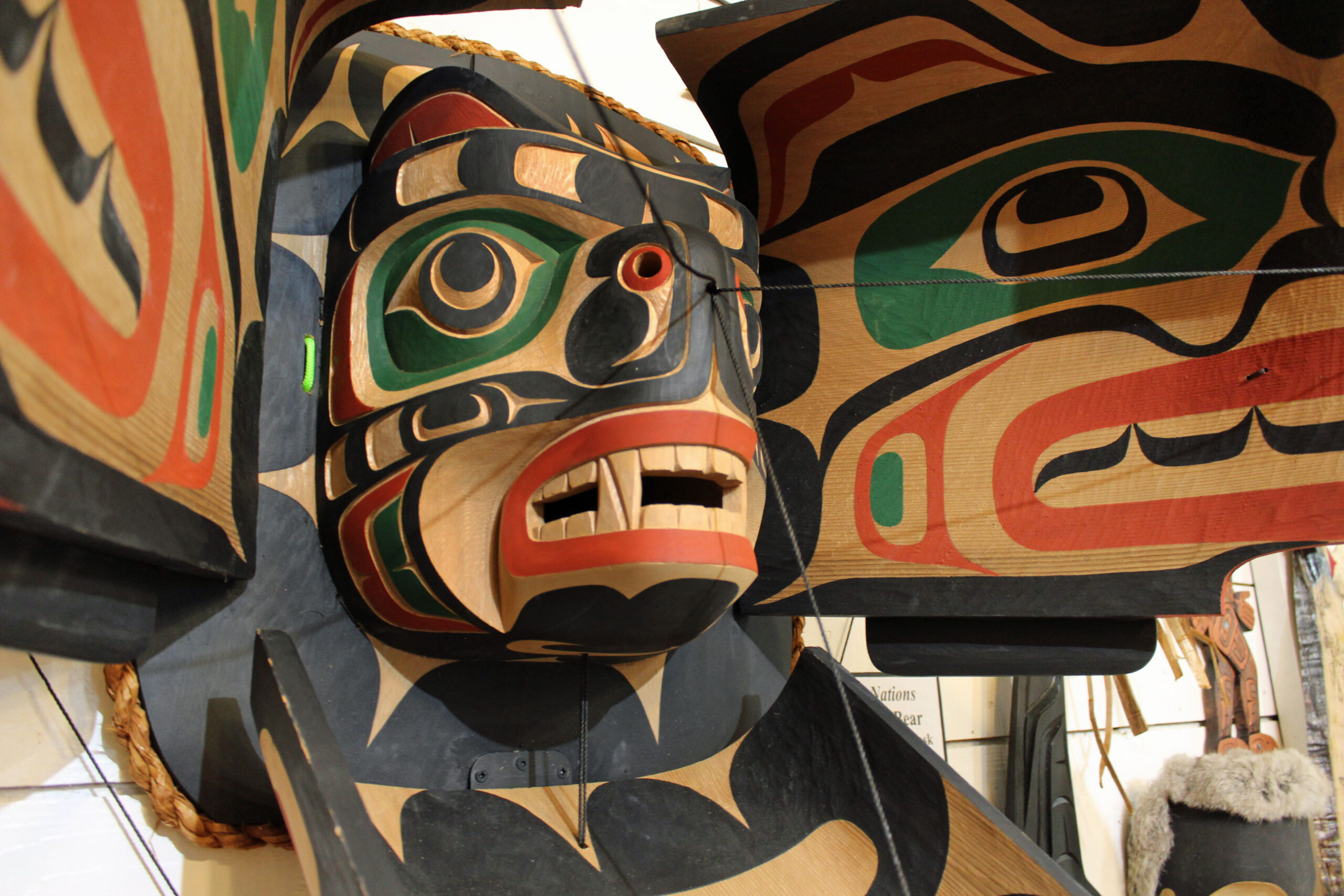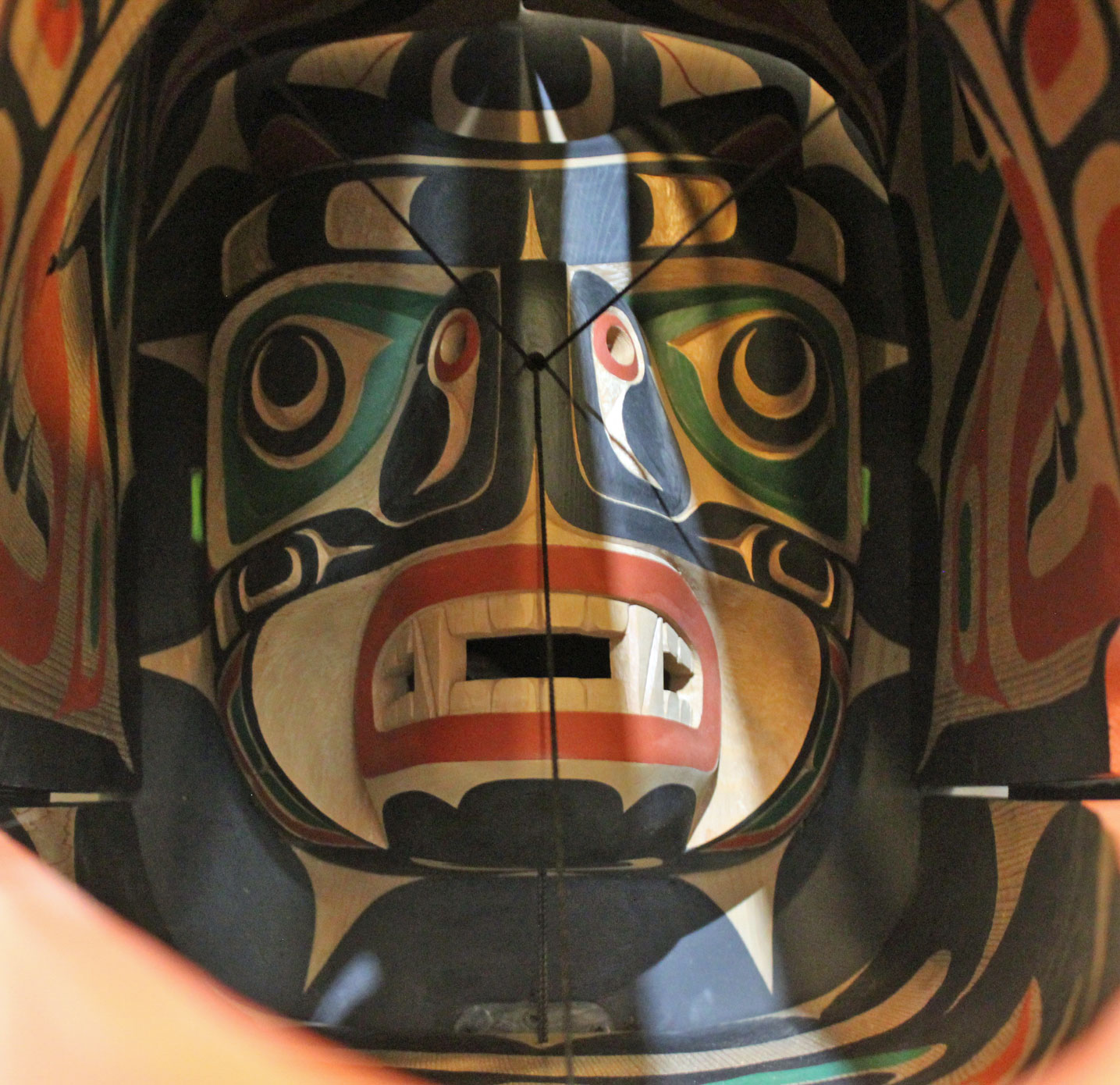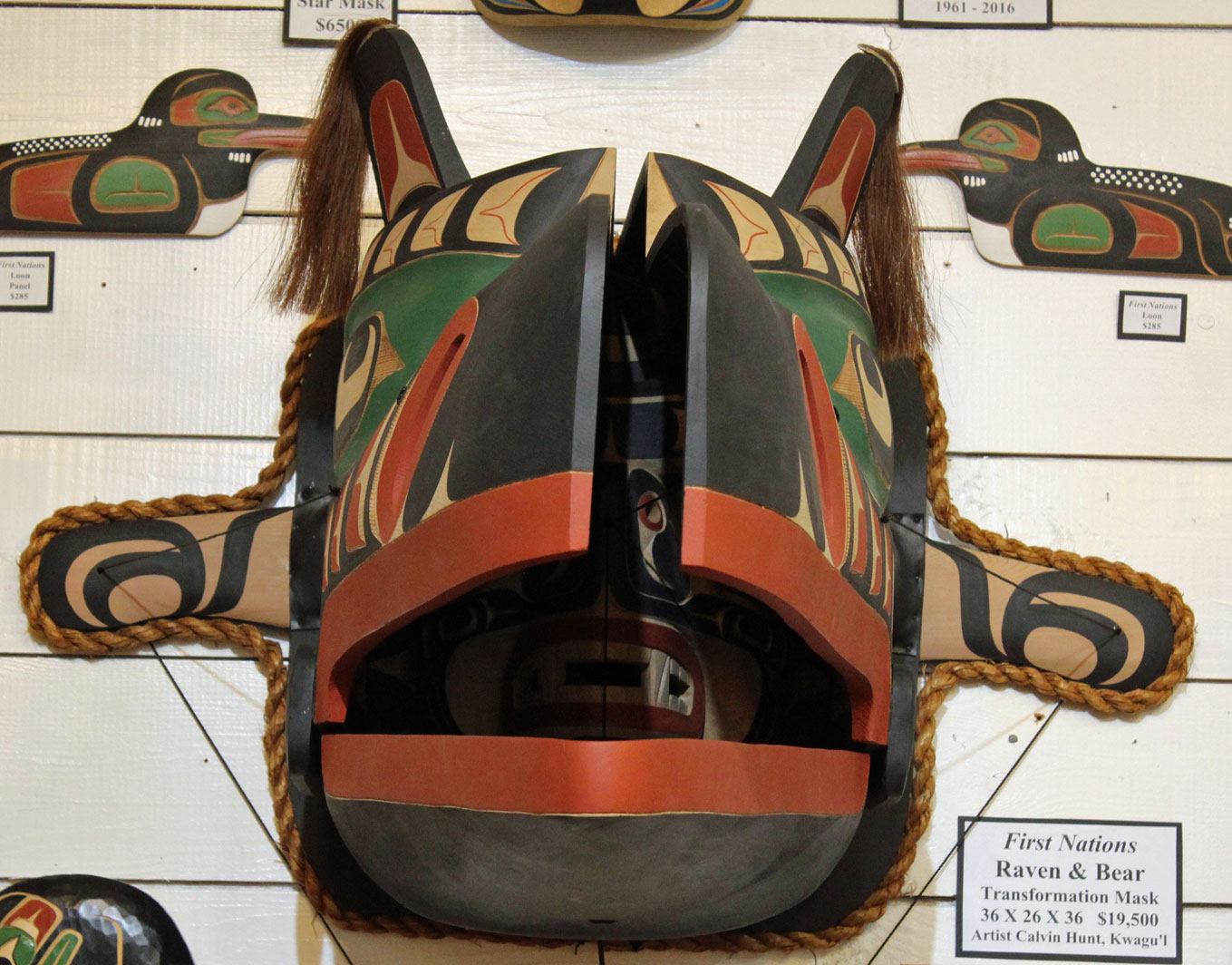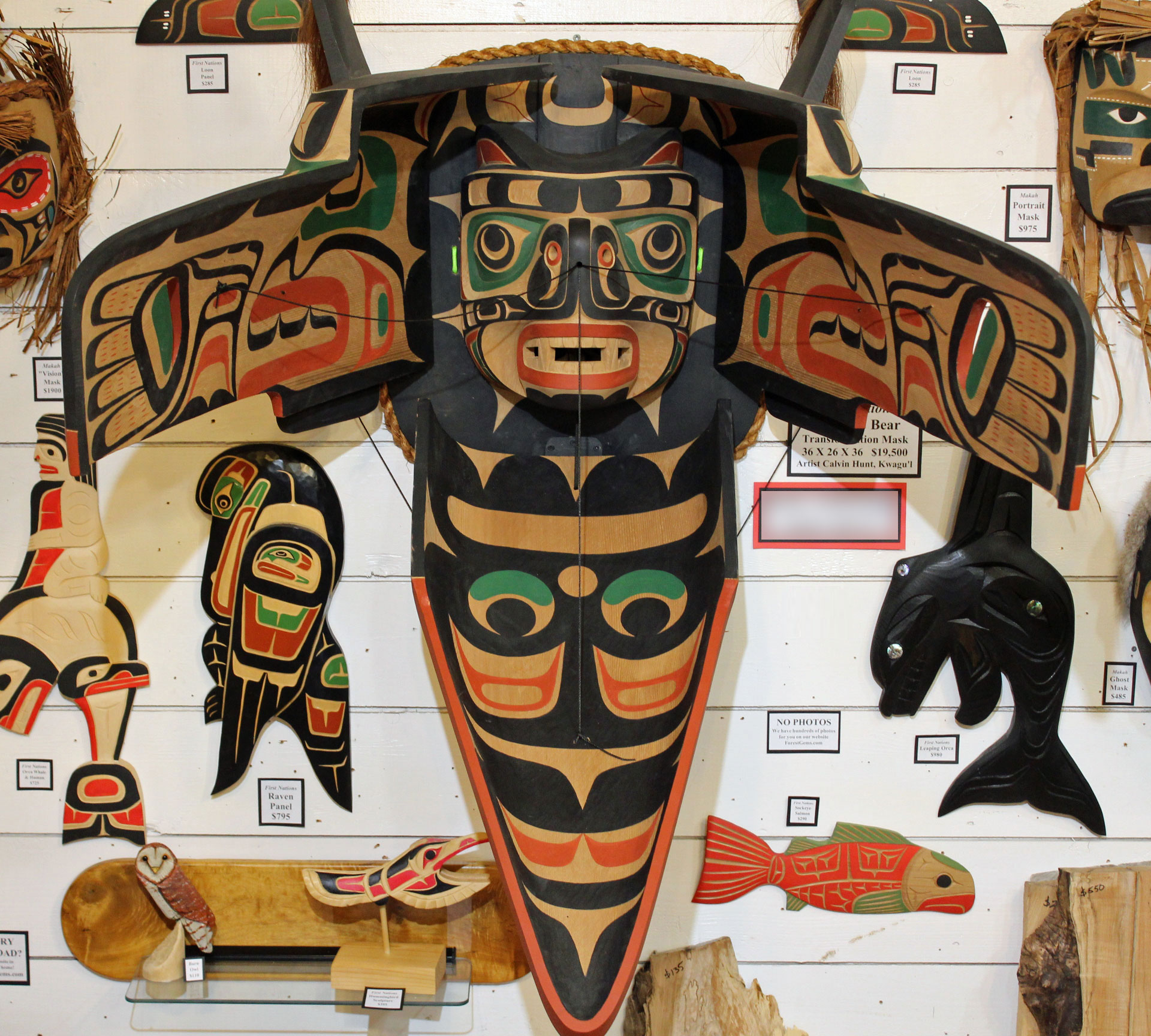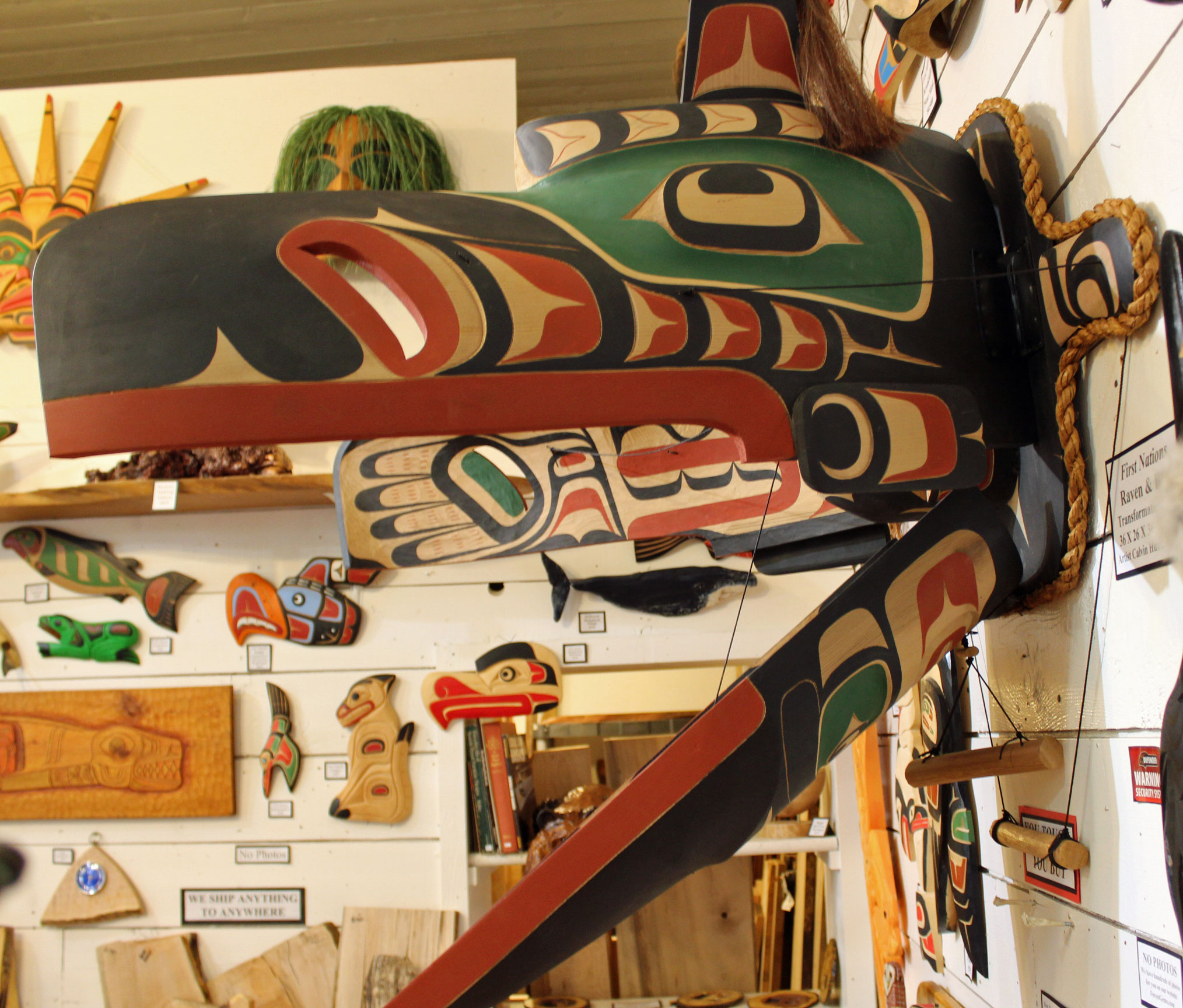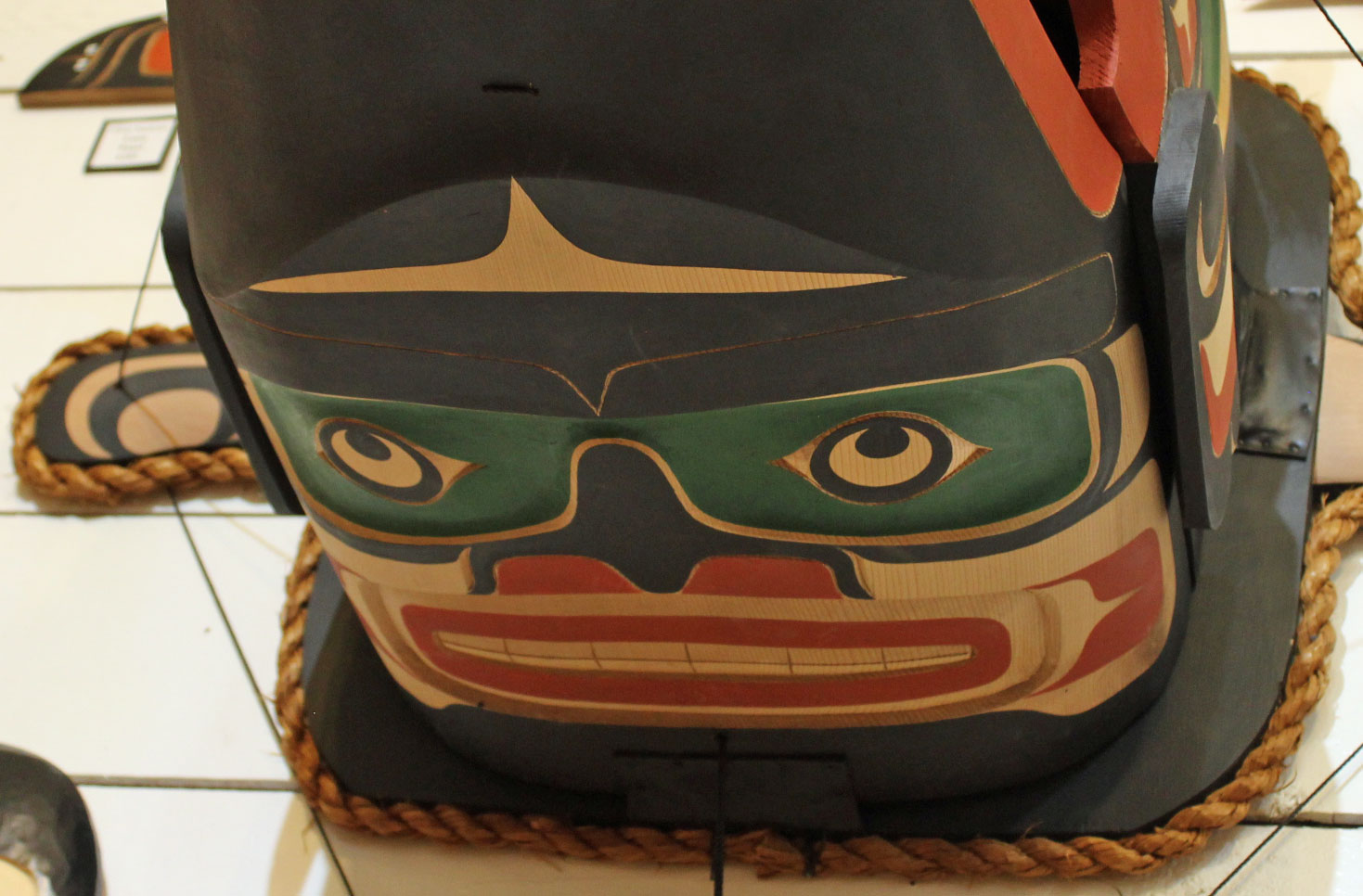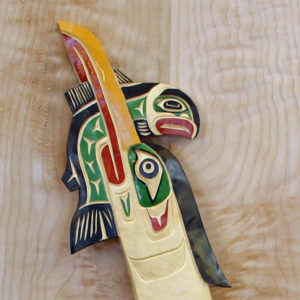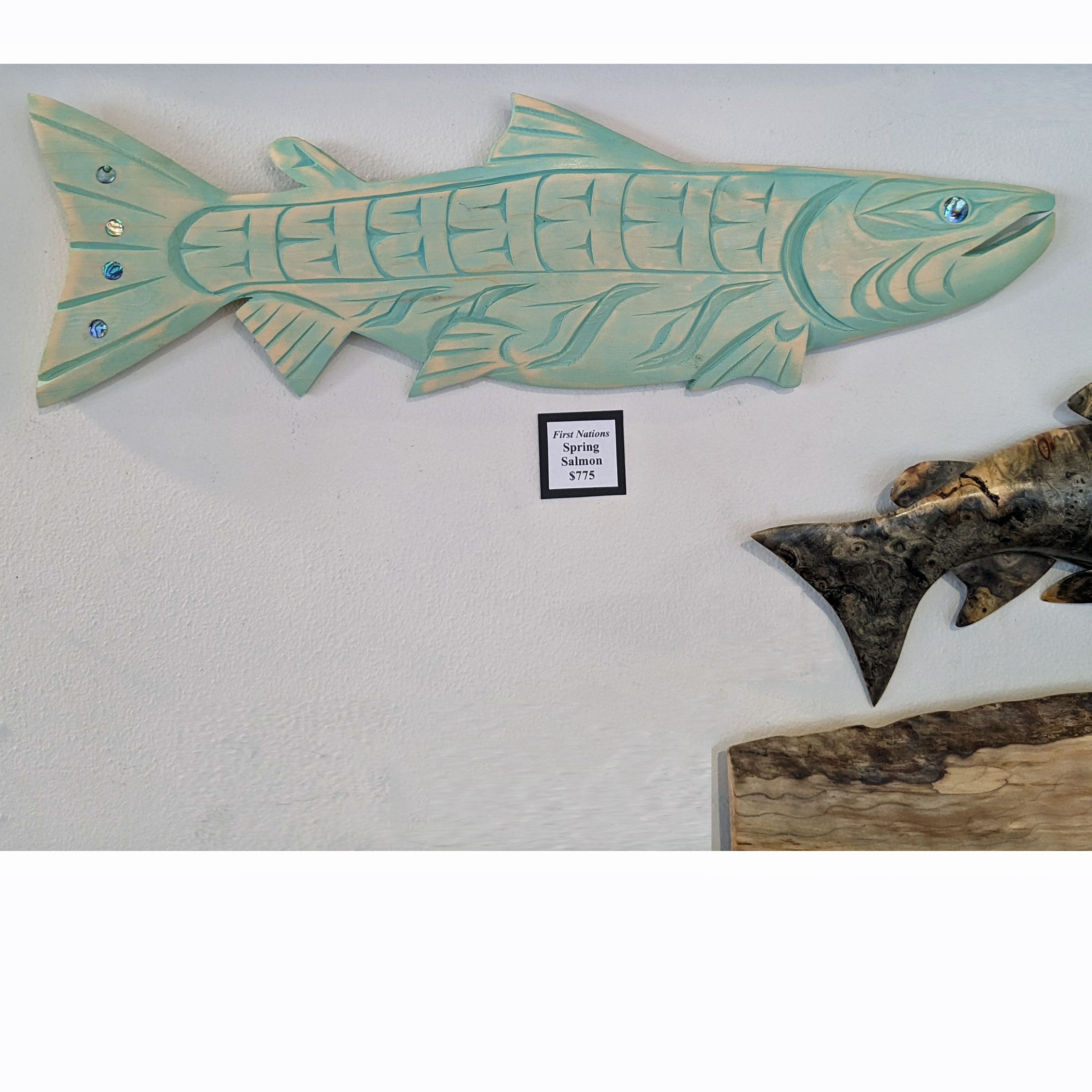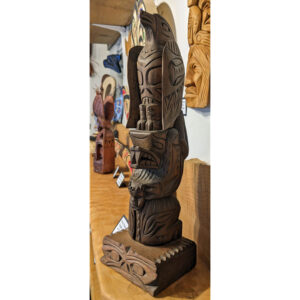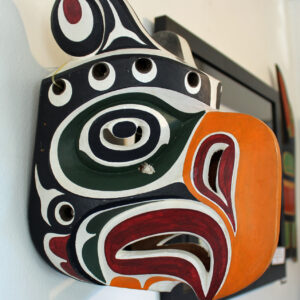Kwagu’l First Nation Raven and Bear Transformation Mask
$19,500.00
Large museum-quality Raven and Bear Transformation Mask by Calvin Hunt. Measures 36 x 26 x 36 when closed, and 42 x 42 x 42 when open. Priced at $19,500.
Incredible quality of carving and painting! Adorned in traditional colors of black, cinnabar red and green with lots of gorgeous very tight grain old-growth Red Cedar showing.
This mask tells the story of how Raven brought Salmon to the people.
“One day Raven spotted Bear grubbing around a rock. This went on for so long that Raven landed and asked Bear what he was doing. Bear replied that he smelled something absolutely delicious, and it was coming from under this huge rock. So Bear and Raven worked together, tugging, pushing, and pulling the rock until it came free, revealing a dark hole in the ground. Bear was too big to climb down, so Raven volunteered to fly down the tunnel to look for the source of the mouth-watering smell.
Finally, Raven came upon a winding, underground river. He followed the river until he came to the village of the Pale People. They were suspicious of Raven. However, Raven was a good talker and convinced them that he was not there to steal any of their secrets; he just wanted to taste their delicious smelling bar-b-que! Raven tasted what they called “salmon” and thought to himself, “I must have this!” While the Pale People weren’t watching, Raven stuffed salmon in his nostrils and ears and tucked some scales under his talons.
Raven stole away from the Pale People, and returned to his world through the tunnel from which he came. Bear was very anxious, but Raven bade him to wait a bit longer. He took Bear to the nearest river and there he released the salmon into the water, giving salmon to the world of daylight.” – Calvin Hunt
About Calvin Hunt, First Nations Artist
- Chief Tlasutiwalis, Kwagu’l, Fort Rupert
- Hereditary Chief Nasnamus, Mowochaht, Friendly Cove
Calvin Allan Hunt, (1956) is the youngest son of Kwagu’l Hereditary Chief Thomas Hunt, and Emma, the daughter of a great Mowachaht Chief and Shaman, Dr. Billy, from Yuquot (Friendly Cove). He is also the grandson of renowned carver Mungo Martin and grandmother, Abayah. In 2004 Calvin was inducted into the prestigious Royal Canadian Academy of Arts, and honoured with the BC Creative Achievement Award for Aboriginal Art in 2009.
www.calvinhunt.com
Artist Statement:
As I work within the traditional Northwest Coast Kwagu’l style, I am reminded of the diversity, spirituality, transformation and meaning of our Kwakwaka’wakw culture. The subject, design elements and colors are elements that contribute to my inspiration. I most enjoy working with western red cedar, and am particularly interested in carving totem poles, masks and dance outfits. There are certain elements that represent the unifying symbolism of various animals and legends which I follow through the knowledge and teachings of my Chiefs, Elders and artists.
I do what I do because…
Fine art constantly evolves; it allows a lens through which the fluidity and creativity of the art of the Northwest Coast is expressed. I mostly work within the elements of traditional southern Kwakiutl art, and it has taken me years to broaden my artistic creativity. Incorporating more contemporary elements and colors is a challenge I enjoy.
My artwork crosses the continuum of history and the present. I enjoy sharing our culture with the world, and I feel very fortunate to have the capacity to pass on our Elders’ teachings.
Most importantly, it is a way for us to teach our children, our “Gwa’layu”, (our reason for living) by providing a creative, inspiring environment that generates knowledge of their crests, legends, songs and dances, giving them a sound foundation of their identity.
An accomplished dancer and respected member of the Kwakwaka’wakw community, Calvin believes it is important to attend and take part in our feasts and potlatches that take place in the guwkzi (Big house). These ceremonies are an integral part of our culture; they teach us respect, humility, honor; they teach us who we are.

